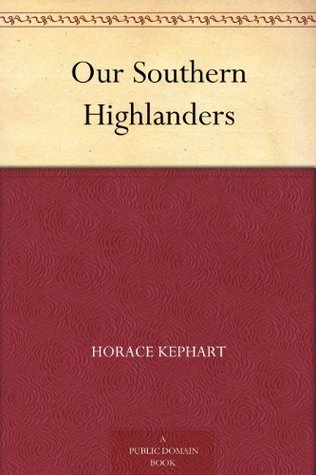Kindle Notes & Highlights
itself comprised two little stores built of rough planks and bearing no signs, a corn mill, and four dwellings.
All about us was the forest primeval, where roamed some sparse herds of cattle, razorback hogs, and the wild beasts.
sinecure.
In our primitive community there were no trades, no professions. Every man was his own farmer, blacksmith, gunsmith, carpenter, cobbler, miller, tinker.
accoucheur.
humus
In clearing new ground, everyone followed the ancient custom of
girdling
This is a quick and easy way to get rid of the shade that otherwise w...
This highlight has been truncated due to consecutive passage length restrictions.
prevents such trees as chestnut, buckeye and basswood from sprout...
This highlight has been truncated due to consecutive passage length restrictions.
tillage
was as rude and destructive as anything we read of in pioneer history. The common plow was a “bull-tongue,”
ha...
This highlight has been truncated due to consecutive passage length restrictions.
Corn was the staple crop—in fact, the only crop of most farmers. Some rye was raised along the creek, and a little oats, but our settlement grew no wheat—there was no mill that could grind it. Wheat is raised, to some extent, in the river bottoms, and on the plateaus of the interior.
(roughage).
Generally some tobacco is grown for family consumption, the strong “twist” being smoked or chewed indifferently.
pharmacopœia,
bloodroot
wild ginger
galax,
“hemlock”
Most of our farmers had neither horse nor mule. For the rough work of cultivating the hillsides a single steer hitched to the “bull-tongue” was better adapted, and the same steer patiently dragged a little sled to the trading post.
declivities
sourwood
The hinterland is naturally adapted to grazing, rather than to agriculture. As it stands, the best pasturage is high up in the mountains, where there are “balds” covered with succulent wild grass that resembles Kentucky bluegrass. Clearing and sowing would extend such areas indefinitely. The cattle forage for themselves through eight or nine months of the year,
On those rare occasions when somebody killed a beef, he had to travel all over the neighborhood to dispose of it in small portions. The carcass was cut up in the same way as a hog, and all parts except the cheap “bilin’ pieces” were sold at the same price: ten cents a pound,
jackknife.
Few sheep were raised in our settlement, and these only for their wool. The untamed Smokies were no place for such defenseless creatures. Sheep will not, cannot, run wild. They are wholly dependent on the fostering hand of man and perish without his shepherding. Curiously enough, our mountaineer knows little or nothing about the goat—an animal perfectly adapted to the free range of the Smokies. I am convinced that goats would be more profitable to the small farmers of the wild mountains than cattle. Goats do not graze, but browse upon the shrubbery, of which there is a vast superfluity in all
...more
A good
m...
This highlight has been truncated due to consecutive passage length restrictions.
goat gives more and richer milk than the average mountain cow. And a kid yields excellent fresh meat in manageable quantity, at a time when no one wo...
This highlight has been truncated due to consecutive passage length restrictions.
Honey often was procured by spotting wild bees to their hoard and chopping the tree, a mild form of sport in which most settlers are expert. Our local preacher had a hundred hives of tame bees, producing 1,500 pounds of honey a year, for which he got ten cents a pound at the railroad.
The wild pig, roaming foot-loose and free over hill and dale, picks up his own living at all seasons and requires no attention at all.
devilment.
instanter—all
Belial;
“That Be-liar,” swore he, “would cross hell on a rotten rail to git into my ’tater patch!”
For a long time my chief interest was not in human neighbors, but in the mountains themselves—in that mysterious beckoning hinterland which rose right back of my chimney and spread upward, outward, almost to three cardinal points of the compass, mile after mile, hour after hour of lusty climbing—an Eden still unpeopled and unspoiled.
haversack,
Here and there is a grassy “bald”: a natural meadow curiously perched on the very top of a mountain.
There are no bare, rocky summits rising above timber-line, few jutting crags, no ribs and vertebræ of the earth exposed.
Pinnacles or serrated ridges are rare.
Every ridge is separated from its sisters by deep and narrow ravines.
In all this vast prospect, a keen eye, knowing where to look, may detect an occasional farmer’s clearing, but to the stranger there is only mountain and forest, mountain and forest, as far as the eye can reach.
Characteristic, too, is the dreamy blue haze, like that of Indian summer intensified, that ever hovers over the mountains, unless they be swathed in cloud, or, for a few minutes, after a sharp rain-storm has cleared the atmosphere.
Both the Blue Ridge and the Smoky Mountains owe their names t...
This highlight has been truncated due to consecutive passage length restrictions.
It softens all outlines, and lends a mirage-like effect of great distance to objects that are but a few miles off, while those farther removed grow more and more intangible until...
This highlight has been truncated due to consecutive passage length restrictions.
forests of our country stand in primeval majesty, mutely awaiting their imminent doom. The richness of the Great Smoky forest has been the wonder and the admiration of everyone who has traversed it. As one climbs from the river to one of the main peaks, he passes successively through the same floral zones he would encounter in traveling from mid-Georgia to southern Canada.
merchantable
Asa Gray


